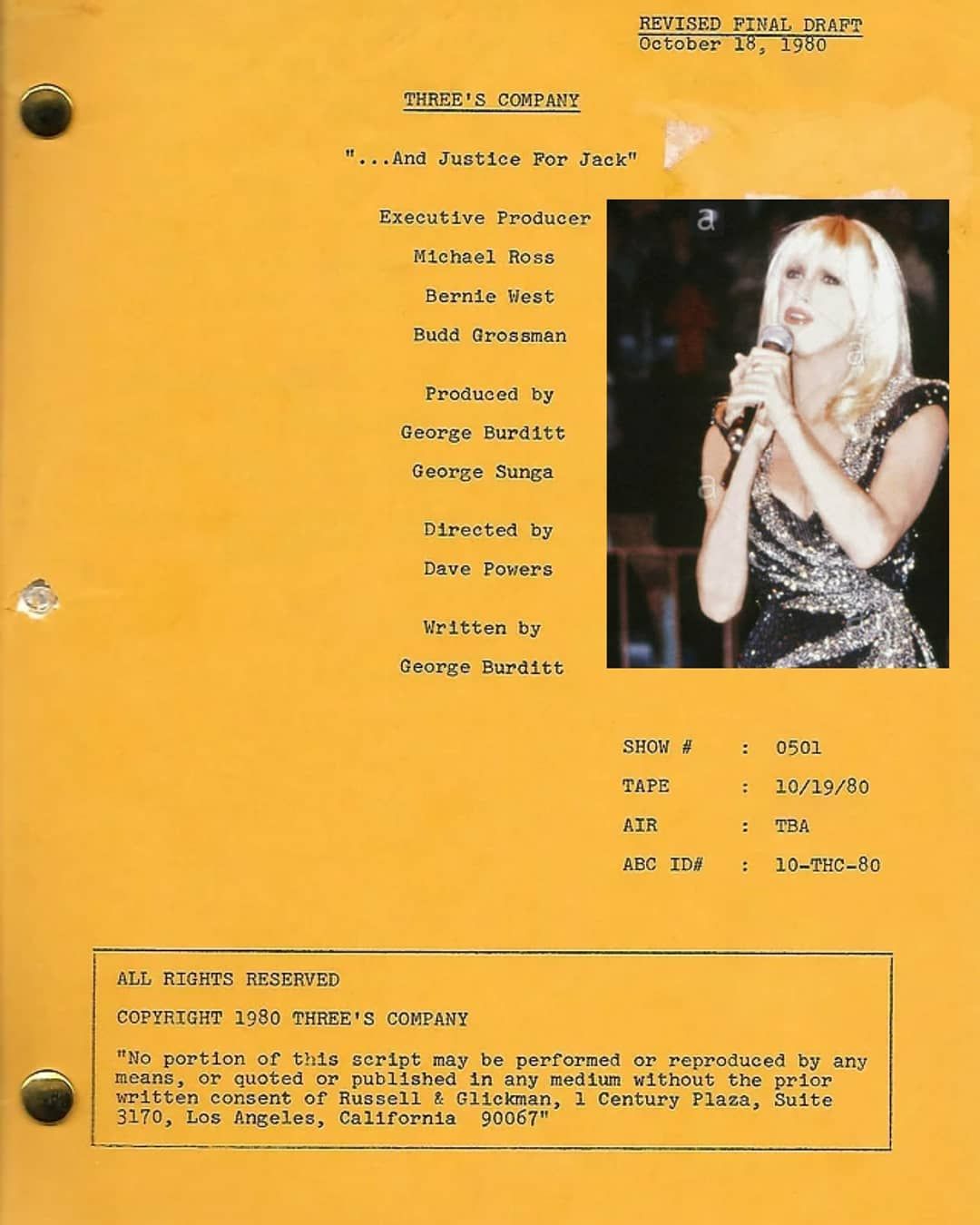
As you would naturally assume, stardom can be a very difficult thing for anybody to handle, and in the case of the cast of Three’s Company, it definitely proved to be a major conflict. Three’s Company was a remake of a British sitcom called Man About the House, about a young man who becomes roommates with two single young women in Santa Monica, California. The curmudgeonly old landlord only allows this arrangement to happen because the roommates lie and say that the young man is gay. The show became a major hit after it launched in 1977, although it never quite became the #1 one show in television (it was the #1 sitcom for a few years, though, finishing the season behind either Dallas or 60 Minutes in the ratings in those years).
The show made stars out of its leads John Ritter, Suzanne Somers and Joyce DeWitt (as Jack Tripper, Chrissy Snow and Janet Wood, respectively) and saw career resurgences for veteran character actors Norman Fell and Audra Lindley (The Ropers, the owners of the building. The husband, Stanley, was the landlord and the wife, Helen, was a friend of the roommates and was in on the secret that Jack was not actually gay).
However, that was early 1978, the real problems did not begin until two years later.
WHAT WAS SUZANNE SOMERS’ PAY DISPUTE WITH THREE’S COMPANY?
While Somers was very popular, the show was still built around Ritter, and he was paid accordingly, a good deal more money than Somers and DeWitt per episode and allegedly a cut of the show’s profits (it is hard to pinpoint the exact contract details forty years later. Suffice it to say, though, that Ritter was doing much better financially than the other two). Joyce DeWitt later recalled (in Chris Mann’s iconic book about the series, Come and Knock on Our Door: A Hers and Hers and His Guide to “Three’s Company) telling Somers, “I told her there was no way in hell that we would ever get points in the show unless we stood together, because they only valued John. They would replace either one of us in the blink of an eye. But they couldn’t lose both of us. And I genuinely believed, and still do, that Suzanne’s and my contribution to the success of the show was worthy of having points in the show.”
Once they were flatly shot down, Hamel told Somers that she was probably done at the show, but they still tried some games first, by having Somers rehearse for episodes but then call out as sick when it came time to record the episode. Somers didn’t show up for the taping of the second episode. She then showed up for third episode, the last one that Somers would do as a full cast member.
As the story goes, from Outsider (but really, it’s repeated in a lot of different places):
There was animosity between Suzanne Somers and her fellow co-stars and even some of the crew. According to reports, John Ritter and Joyce DeWitt avoided seeing Somers. In Season 5, producers decided to make color-coded scripts to let Ritter and DeWitt prepare for scenes with their estranged co-star. Blue meant that the character of Chrissy would be in a scene while pink meant she would not be present for the taping.
Is that true?
WHY DID THE SHOW HAVE DIFFERENT COLORED SCRIPTS?
It IS true that there was major tension between the actors during this period, especially Ritter being angry at Somers causing trouble with “his” show. Ritter literally didn’t speak to Somers after she left the show until reconciling with her just a month before his sudden and tragic death in 2003 (he was interested in seeing if Somers and DeWitt would make a cameo in his sitcom of the time, 8 Simple Rules… for Dating My Teenage Daughter). However, the color coding had a whole other purpose than warning the cast. You see, since the producers didn’t know whether Somers would show up or not, they had different scripts produced. One with Chrissy being part of the episode, and one with Chrissy missing.
The scripts would be color-coded to let the cast know which one they were going to use. The great Three’s Company collector Twitter account, threescompanycollection, has a sample of one of those scripts:
And here are Chrissy’s lines (Somers ended up missing the episode)…
So no, the color-coding was not specifically designed as a way to warn the rest of the cast as to whether they would have to share scenes with Somers.
I’m going with the legend as…
STATUS: False
Be sure to check out my archive of TV Legends Revealed for more urban legends about the world of TV.
Feel free (heck, I implore you!) to write in with your suggestions for future installments! My e-mail address is bcronin@legendsrevealed.com.



